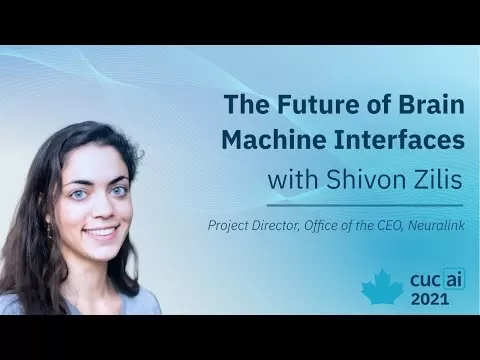The Future of Brain Machine Interfaces: Symbiotic Intelligence vs Human Intelligence
The realm of Intelligence Amplification (IA) through Brain-Machine Interfaces (BMIs) is opening up new frontiers in human cognitive enhancement, sparking discussions about the future and potential societal divides. IA via BMIs isn't just about making us smarter; it's about creating a seamless integration between human intelligence and artificial intelligence (AI), promising a world where some might choose to augment themselves while others remain unenhanced.
But what exactly is Intelligence Amplification? The concept isn't new; it was first introduced by William Ross Ashby in his seminal work *Introduction to Cybernetics*. Over time, it has evolved into what we now call Augmented Intelligence, a branch of machine learning designed to enhance human decision-making and information access. However, current forms of Augmented Intelligence stop at providing data assistance without forming a real-time symbiotic relationship with the user.
Enter BMIs, which promise to take this concept to a new level. Unlike accessing information through external devices like computers or smartphones, BMIs are implanted directly into the brain, creating an extension of the human mind. Imagine being able to tap into the vast expanse of the internet and have an AI feed you relevant data in real-time, enhancing your cognitive abilities far beyond what's currently possible. It's like having perfect recall, where you never forget a name, date, or fact again. This vision was explored in J.C.R. Licklider's 1960 paper, "Man-Computer Symbiosis," where he discussed the potential for humans and computers to form a tight-knit partnership, enhancing our thinking capabilities in ways we can't even imagine today.
A fascinating example of this symbiosis in action is in the world of chess. While we've seen AI systems like Deep Blue defeat human champions, the real intrigue lies in human-AI teams that outperform standalone AI. In these teams, the AI handles the heavy computational load and pattern recognition, while the human brings intuition and strategic insight. This collaboration hints at the potential for humans and AI to tackle complex problems that neither could solve alone.
So, how does Intelligence Amplification via BMIs work? It's all about enhancing the brain's natural ability to recognize patterns and make connections. With a BMI, an AI system could help form those patterns instantly, providing perfect recall and allowing you to absorb and process information at incredible speeds. Imagine watching a YouTube video once and retaining every detail, or engaging in a conversation where you can pull up any piece of information instantly.
Finding BMIs isn't straightforward yet, as the technology is still in its infancy. However, companies like Neuralink, led by Elon Musk, are at the forefront of developing ultra-high bandwidth BMIs. Neuralink's approach involves inserting micron-scale threads into the brain, which connect to an implant called the Link. This system decodes brain waves to translate thought into action, like moving a cursor or controlling a robotic arm. The challenge lies in reducing latency and making the system user-friendly.
Neuralink isn't the only player in the game. Researchers from the Howard Hughes Medical Institute, for example, have developed a BMI that can type out mental handwriting, allowing paralyzed individuals to communicate at unprecedented speeds. Other studies have shown the potential for wireless BMIs to enable basic computer interactions for those with paralysis.

As we look to the future, the divide between enhanced and unenhanced humans becomes a pressing concern. Those with BMIs could experience significant boosts in productivity and efficiency, potentially leaving unenhanced individuals behind. An enhanced employee might never need to second-guess themselves, with instant access to information and the ability to filter out irrelevant data. They could even communicate thoughts directly, bypassing the need for typing or speaking.
This divide could lead to a society where enhanced humans prefer to collaborate with each other, leaving unenhanced individuals at a disadvantage. Employers might prioritize hiring enhanced staff, potentially disregarding traditional qualifications. However, before we reach this point, BMIs are being developed to address neurological issues like memory loss, hearing loss, and paralysis, showing their potential to improve lives in meaningful ways.
Elon Musk's long-term vision for Neuralink is to create a high-bandwidth interface that allows humans to keep pace with advancing AI, potentially leading to Superintelligence. As we navigate this future, the choice to enhance oneself will be a pivotal one, with BMIs standing at the forefront of this transformative journey.
Related article
 Master Emerald Kaizo Nuzlocke: Ultimate Survival & Strategy Guide
Emerald Kaizo stands as one of the most formidable Pokémon ROM hacks ever conceived. While attempting a Nuzlocke run exponentially increases the challenge, victory remains achievable through meticulous planning and strategic execution. This definitiv
Master Emerald Kaizo Nuzlocke: Ultimate Survival & Strategy Guide
Emerald Kaizo stands as one of the most formidable Pokémon ROM hacks ever conceived. While attempting a Nuzlocke run exponentially increases the challenge, victory remains achievable through meticulous planning and strategic execution. This definitiv
 AI-Powered Cover Letters: Expert Guide for Journal Submissions
In today's competitive academic publishing environment, crafting an effective cover letter can make the crucial difference in your manuscript's acceptance. Discover how AI-powered tools like ChatGPT can streamline this essential task, helping you cre
AI-Powered Cover Letters: Expert Guide for Journal Submissions
In today's competitive academic publishing environment, crafting an effective cover letter can make the crucial difference in your manuscript's acceptance. Discover how AI-powered tools like ChatGPT can streamline this essential task, helping you cre
 US to Sanction Foreign Officials Over Social Media Regulations
US Takes Stand Against Global Digital Content Regulations
The State Department issued a sharp diplomatic rebuke this week targeting European digital governance policies, signaling escalating tensions over control of online platforms. Secretary Marco
Comments (21)
0/200
US to Sanction Foreign Officials Over Social Media Regulations
US Takes Stand Against Global Digital Content Regulations
The State Department issued a sharp diplomatic rebuke this week targeting European digital governance policies, signaling escalating tensions over control of online platforms. Secretary Marco
Comments (21)
0/200
![MarkGarcia]() MarkGarcia
MarkGarcia
 July 31, 2025 at 10:48:18 PM EDT
July 31, 2025 at 10:48:18 PM EDT
Mind-blowing stuff! BMIs could totally change how we think and connect, but I’m kinda worried about the gap it might create between the 'enhanced' and everyone else. 🤯 What’s next, a brain app store?


 0
0
![AlbertThomas]() AlbertThomas
AlbertThomas
 April 25, 2025 at 7:37:01 AM EDT
April 25, 2025 at 7:37:01 AM EDT
Interfaces Cérebro-Máquina parecem legais, mas a ideia de fundir a inteligência humana e a máquina me assusta um pouco. Quero dizer, onde traçamos a linha? Ainda assim, é fascinante pensar no potencial. Talvez eu me acostume com a ideia, mas por enquanto, é um pouco sci-fi demais para mim 🤖


 0
0
![WalterLewis]() WalterLewis
WalterLewis
 April 23, 2025 at 5:48:15 AM EDT
April 23, 2025 at 5:48:15 AM EDT
Brain-Machine Interfaces sound cool, but the idea of merging human and machine intelligence kinda freaks me out. I mean, where do we draw the line? Still, it's fascinating to think about the potential. Maybe I'll get used to the idea, but for now, it's a bit too sci-fi for me 🤖


 0
0
![JohnRamirez]() JohnRamirez
JohnRamirez
 April 21, 2025 at 5:10:39 PM EDT
April 21, 2025 at 5:10:39 PM EDT
This tool really makes you think about where we're headed with brain-machine interfaces! It's not just about getting smarter, but about blending human and machine intelligence in ways we haven't seen before. Exciting, yet a bit scary. 🤖🧠 Definitely worth exploring more, but maybe we should slow down a bit and think about the ethical implications? Just saying!


 0
0
![SamuelRoberts]() SamuelRoberts
SamuelRoberts
 April 21, 2025 at 12:17:57 PM EDT
April 21, 2025 at 12:17:57 PM EDT
Achei muito interessante pensar no futuro das interfaces cérebro-máquina! É incrível como a IA pode ampliar nossas capacidades, mas também me preocupa um pouco com os impactos sociais. Vale a pena explorar mais, mas não é para os fracos de coração! 🤨


 0
0
![FrankJackson]() FrankJackson
FrankJackson
 April 20, 2025 at 7:55:47 PM EDT
April 20, 2025 at 7:55:47 PM EDT
ブレイン・マシン・インターフェースは面白そうですが、人間の知能と機械の知能を融合するというアイデアは少し怖いです。どこで線を引くべきかわかりません。でも、可能性を考えると興味深いです。慣れるまでには時間がかかるかもしれませんが、今のところは少しSF的すぎますね🤖


 0
0
The realm of Intelligence Amplification (IA) through Brain-Machine Interfaces (BMIs) is opening up new frontiers in human cognitive enhancement, sparking discussions about the future and potential societal divides. IA via BMIs isn't just about making us smarter; it's about creating a seamless integration between human intelligence and artificial intelligence (AI), promising a world where some might choose to augment themselves while others remain unenhanced.
But what exactly is Intelligence Amplification? The concept isn't new; it was first introduced by William Ross Ashby in his seminal work *Introduction to Cybernetics*. Over time, it has evolved into what we now call Augmented Intelligence, a branch of machine learning designed to enhance human decision-making and information access. However, current forms of Augmented Intelligence stop at providing data assistance without forming a real-time symbiotic relationship with the user.
Enter BMIs, which promise to take this concept to a new level. Unlike accessing information through external devices like computers or smartphones, BMIs are implanted directly into the brain, creating an extension of the human mind. Imagine being able to tap into the vast expanse of the internet and have an AI feed you relevant data in real-time, enhancing your cognitive abilities far beyond what's currently possible. It's like having perfect recall, where you never forget a name, date, or fact again. This vision was explored in J.C.R. Licklider's 1960 paper, "Man-Computer Symbiosis," where he discussed the potential for humans and computers to form a tight-knit partnership, enhancing our thinking capabilities in ways we can't even imagine today.
A fascinating example of this symbiosis in action is in the world of chess. While we've seen AI systems like Deep Blue defeat human champions, the real intrigue lies in human-AI teams that outperform standalone AI. In these teams, the AI handles the heavy computational load and pattern recognition, while the human brings intuition and strategic insight. This collaboration hints at the potential for humans and AI to tackle complex problems that neither could solve alone.
So, how does Intelligence Amplification via BMIs work? It's all about enhancing the brain's natural ability to recognize patterns and make connections. With a BMI, an AI system could help form those patterns instantly, providing perfect recall and allowing you to absorb and process information at incredible speeds. Imagine watching a YouTube video once and retaining every detail, or engaging in a conversation where you can pull up any piece of information instantly.
Finding BMIs isn't straightforward yet, as the technology is still in its infancy. However, companies like Neuralink, led by Elon Musk, are at the forefront of developing ultra-high bandwidth BMIs. Neuralink's approach involves inserting micron-scale threads into the brain, which connect to an implant called the Link. This system decodes brain waves to translate thought into action, like moving a cursor or controlling a robotic arm. The challenge lies in reducing latency and making the system user-friendly.
Neuralink isn't the only player in the game. Researchers from the Howard Hughes Medical Institute, for example, have developed a BMI that can type out mental handwriting, allowing paralyzed individuals to communicate at unprecedented speeds. Other studies have shown the potential for wireless BMIs to enable basic computer interactions for those with paralysis.

As we look to the future, the divide between enhanced and unenhanced humans becomes a pressing concern. Those with BMIs could experience significant boosts in productivity and efficiency, potentially leaving unenhanced individuals behind. An enhanced employee might never need to second-guess themselves, with instant access to information and the ability to filter out irrelevant data. They could even communicate thoughts directly, bypassing the need for typing or speaking.
This divide could lead to a society where enhanced humans prefer to collaborate with each other, leaving unenhanced individuals at a disadvantage. Employers might prioritize hiring enhanced staff, potentially disregarding traditional qualifications. However, before we reach this point, BMIs are being developed to address neurological issues like memory loss, hearing loss, and paralysis, showing their potential to improve lives in meaningful ways.
Elon Musk's long-term vision for Neuralink is to create a high-bandwidth interface that allows humans to keep pace with advancing AI, potentially leading to Superintelligence. As we navigate this future, the choice to enhance oneself will be a pivotal one, with BMIs standing at the forefront of this transformative journey.
 Master Emerald Kaizo Nuzlocke: Ultimate Survival & Strategy Guide
Emerald Kaizo stands as one of the most formidable Pokémon ROM hacks ever conceived. While attempting a Nuzlocke run exponentially increases the challenge, victory remains achievable through meticulous planning and strategic execution. This definitiv
Master Emerald Kaizo Nuzlocke: Ultimate Survival & Strategy Guide
Emerald Kaizo stands as one of the most formidable Pokémon ROM hacks ever conceived. While attempting a Nuzlocke run exponentially increases the challenge, victory remains achievable through meticulous planning and strategic execution. This definitiv
 AI-Powered Cover Letters: Expert Guide for Journal Submissions
In today's competitive academic publishing environment, crafting an effective cover letter can make the crucial difference in your manuscript's acceptance. Discover how AI-powered tools like ChatGPT can streamline this essential task, helping you cre
AI-Powered Cover Letters: Expert Guide for Journal Submissions
In today's competitive academic publishing environment, crafting an effective cover letter can make the crucial difference in your manuscript's acceptance. Discover how AI-powered tools like ChatGPT can streamline this essential task, helping you cre
 US to Sanction Foreign Officials Over Social Media Regulations
US Takes Stand Against Global Digital Content Regulations
The State Department issued a sharp diplomatic rebuke this week targeting European digital governance policies, signaling escalating tensions over control of online platforms. Secretary Marco
US to Sanction Foreign Officials Over Social Media Regulations
US Takes Stand Against Global Digital Content Regulations
The State Department issued a sharp diplomatic rebuke this week targeting European digital governance policies, signaling escalating tensions over control of online platforms. Secretary Marco
 July 31, 2025 at 10:48:18 PM EDT
July 31, 2025 at 10:48:18 PM EDT
Mind-blowing stuff! BMIs could totally change how we think and connect, but I’m kinda worried about the gap it might create between the 'enhanced' and everyone else. 🤯 What’s next, a brain app store?


 0
0
 April 25, 2025 at 7:37:01 AM EDT
April 25, 2025 at 7:37:01 AM EDT
Interfaces Cérebro-Máquina parecem legais, mas a ideia de fundir a inteligência humana e a máquina me assusta um pouco. Quero dizer, onde traçamos a linha? Ainda assim, é fascinante pensar no potencial. Talvez eu me acostume com a ideia, mas por enquanto, é um pouco sci-fi demais para mim 🤖


 0
0
 April 23, 2025 at 5:48:15 AM EDT
April 23, 2025 at 5:48:15 AM EDT
Brain-Machine Interfaces sound cool, but the idea of merging human and machine intelligence kinda freaks me out. I mean, where do we draw the line? Still, it's fascinating to think about the potential. Maybe I'll get used to the idea, but for now, it's a bit too sci-fi for me 🤖


 0
0
 April 21, 2025 at 5:10:39 PM EDT
April 21, 2025 at 5:10:39 PM EDT
This tool really makes you think about where we're headed with brain-machine interfaces! It's not just about getting smarter, but about blending human and machine intelligence in ways we haven't seen before. Exciting, yet a bit scary. 🤖🧠 Definitely worth exploring more, but maybe we should slow down a bit and think about the ethical implications? Just saying!


 0
0
 April 21, 2025 at 12:17:57 PM EDT
April 21, 2025 at 12:17:57 PM EDT
Achei muito interessante pensar no futuro das interfaces cérebro-máquina! É incrível como a IA pode ampliar nossas capacidades, mas também me preocupa um pouco com os impactos sociais. Vale a pena explorar mais, mas não é para os fracos de coração! 🤨


 0
0
 April 20, 2025 at 7:55:47 PM EDT
April 20, 2025 at 7:55:47 PM EDT
ブレイン・マシン・インターフェースは面白そうですが、人間の知能と機械の知能を融合するというアイデアは少し怖いです。どこで線を引くべきかわかりません。でも、可能性を考えると興味深いです。慣れるまでには時間がかかるかもしれませんが、今のところは少しSF的すぎますね🤖


 0
0





























